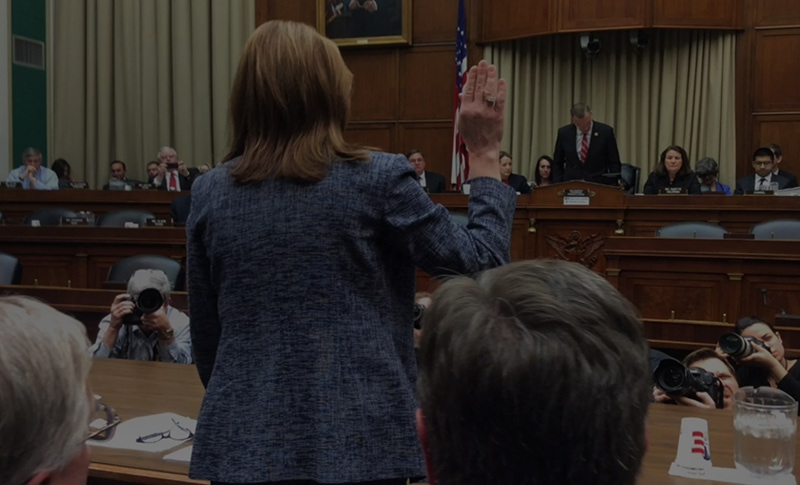To be sure, September 2008 was a pure financial mess. Toxic credit default swaps and irresponsible subprime lending created an unsustainable housing market that served as the underpinnings of the day’s economy, and when it all collapsed – as it had to – Wall Street’s biggest and brightest were caught drowning under the weight of their overstated balance sheets. The nation gasped as the 150-year-old Lehman Brothers tumbled into bankruptcy, and panic set in as we began to realize that many more could follow.
Lawmakers responded to the crisis by enacting the 2008 Troubled Asset Relief Program (TARP) – a $700 billion fund used by the Treasury to bailout companies that were considered to be an indispensable part of the economy. TARP was implemented immediately, which is as much of its downfall as it is its salvation. Companies like AIG and Citibank needed billions immediately, and so billions were handed out without considerable thought given to the consequences that might develop.
Part of the economic bailout was aimed at the domestic automotive industry, where the Treasury committed $80.7 billion to Chrysler and General Motors, and their respective financing arms. In exchange Chrysler and General Motors were required to present President Barack Obama’s Auto Task Force with “aggressive” restructuring plans that included a reduction of 25 percent of their dealer networks. For Chrysler, this meant terminating 789 dealers; for GM it was 1,454.
The manner in which Chrysler and GM went about terminating their dealers was distinctly different, although both were done through the bankruptcy court. GM gave its dealers wind-down agreements where they were phased out over a 16 month period and then paid a termination fee, in exchange for a release of all claims. Chrysler, on the other hand, gave its 789 dealers a mere 22 days to cease all business operations, and then paid them nothing for their franchises and years of service.
Because of the enormous financial investment dealers are required to put into their franchises, nearly all states have laws that only allow manufacturers to terminate dealers for “good cause.” Dealers routinely invest millions into facilities, parts, equipment and goodwill, and are required to obtain substantial credit lines for the vehicle inventory they carry. To put into perspective the magnitude of just how important dealerships are to the economy, consider that the average dealership in California generates $50 million in annual sales, employs 85 people, and pays $4.5 million in federal, state and local taxes.
So, when Chrysler informed 789 of its dealers that they were going to be terminated in just 22 days, and that it was all going to be insulated from attack in a pre-packaged bankruptcy filing, shockwaves were felt throughout the dealer community. Now, however, the dealers are fighting back.
In three companion lawsuits filed in the Federal Court of Claims in Washington D.C. (Spitzer Motor City v. U.S., et al.), several hundred former Chrysler dealers have filed claims against the United States for violating the Fifth Amendment of the U.S. Constitution. Under their theory, the U.S. orchestrated Chrysler’s termination of their franchises when it provided the automaker with billions in public TARP funds, resulting in a “taking” of their property without just compensation. Their argument is garnering considerable support.
In his recent book Overhaul, Steven Rattner, the head of the Auto Task Force, acknowledged that the Task Force specifically sought to terminate the Chrysler dealers through the bankruptcy court so that it didn’t “run afoul of the takings clause of the U.S. Constitution.” In a report to Congress by the Special Inspector General for TARP, the Inspector General found that the U.S. purposefully utilized the bankruptcy code “in a quick and surgical way” to terminate the dealer networks.
However, the Government’s attempt at insulating its actions through the bankruptcy court is now falling short. In two of the takings cases filed by the former Chrysler dealers, the trial judge has rejected the notion that the U.S. cannot be held liable for violating the Fifth Amendment because the takings were sanctioned by the bankruptcy court: “[T]he Chrysler bankruptcy was an irrelevant and complicating event. Bankruptcy court rulings should not be used by [the U.S.] to prevent plaintiffs from pursuing their takings claims in this court.”
In denying the Government’s motion to dismiss, Judge Robert Hodges stated that the dealers presented “unusual allegations that nevertheless create the prima facie feel of a takings case warranting just compensation.” Unusual because, under current U.S. Supreme Court authority, categorical takings have thus far only involved real property. But, as Judge Hodges noted, the Supreme Court has stressed the importance of considering takings in the context of surrounding events, anticipating that unique cases would arise. As a result, the Supreme Court refused to develop a set formula for determining when a taking occurs, but instead requires courts to perform an ad hoc, factual inquiry.
In response to the assertion that the termination of the franchises was done by Chrysler, not the U.S., Judge Hodges noted that “when separate corporate entities act for the U.S., the U.S. is liable for their takings.” The court also stated that the dealers were entitled to demonstrate that the loss of their franchises was the direct, natural and probable result of the Government’s actions.
The Spitzer Motor City v. U.S. takings cases are the first to challenge the Treasury’s disbursement of TARP funds; and if right, they will expand current U.S. Supreme Court case law on the interpretation of the Fifth Amendment, and result in billions being paid to the dealers who lost everything. For the dealers who lost franchises that had been in their family for generations, or those who are still paying back the debt they incurred when purchasing what they thought was a solid investment, such a day will finally bring resolution to the nightmare of it all. As Mary McCarthy stated in My Confession: “An unrectified case of injustice has a terrible way of lingering, restlessly, in the social atmosphere like an unfinished question.”
